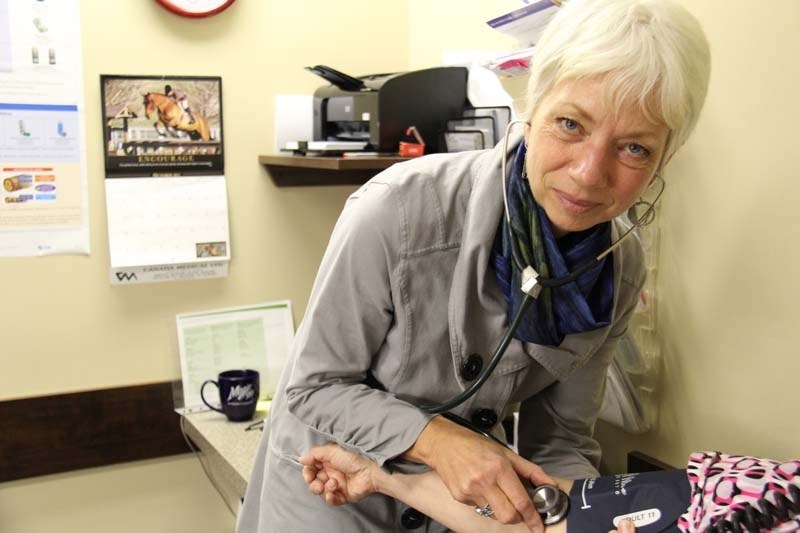Sitting in the waiting room of a walk-in clinic you will no doubt hear a cacophony of sounds: coughing, crying babies and phones ringing off the hook.
Receptionists are madly clicking at their computers and doctors are hopping from room to room, examining the next patient on their growing list.
But working behind the scenes in several medical clinics that are part of the St. Albert & Sturgeon Primary Care Network (PCN), are nurses who work alongside doctors as well as see patients one-on-one.
Johanna Buisman is one of those primary care nurses.
"Primary care means right at the front line, initial contact with doctors and that's where we are," said Buisman, a registered nurse and one of 10 primary care nurses within the PCN.
Buisman works out of the Summit Family Clinic, Monday through Friday. In addition to consulting during doctor appointments, she sees patients in her own designated exam room. On any given day she averages seven to 12 patients by herself.
"My role is to help the patients gain more access. I will do assessments and pre-assessments for (the doctors) before they see the patient so the visit may go a bit quicker," she explained.
With a nurse being able to take down medical histories, sort out patients' lab work, prescription medication renewals and identify the objective of their visit, the appointment process is streamlined, Buisman said.
"People will book with me if they have questions, or issues, or if they need a little bit more time to talk about their health," she added.
In order to tackle more complex cases, Buisman works within a health-care team that includes family physicians, pharmacists, dietitians and social workers. These cases often include the management of chronic diseases such as diabetes, asthma and hypertension.
For example, after a person is newly-diagnosed with diabetes, the patient is booked for a 45-minute appointment with Buisman. During that appointment, the primary-care nurse would explain the disease and how diet, exercise and medication can help treat it, Buisman explained.
The nurse can also show the patient how to test her own blood sugar levels and can start the patient on insulin therapy.
The role involves a lot of health teaching, Buisman noted.
Referrals are another important part of treatment. For example, since a diagnosis of chronic diabetes may also lead to depression, Buisman may refer the patient to a mental health professional or a PCN class on diabetes.
"The biggest thing is to get a person to be independent with their own health," remarked Buisman.
She added that she will often work with a PCN pharmacist or dietitian to make the patient a care plan, but if the patients also learn how to self manage, that means fewer doctor visits and trips to the emergency room in the long run.
Liaisons
Primary-care nurses also act as liaisons for community resources. Buisman said she often helps reorganize medications and care for patients receiving home care (also known as home living) or palliative care.
Before the use of PCN nurses, sometimes physicians wouldn't know what community resources to recommend for their patients, said Dr. Jacqueline Kassam, a general practitioner at Summit Family Clinic.
"We now have the benefit of really educating our patients well, really making sure they understand their disease well. Our patients really appreciate the increased level of care that they get," she said.
Between April 1, 2012 and March 31, 2013, PCN nurses saw 6,000 patients.
"The trend now is to look at multi-disciplinary teams for patient care, which really does improve care," added Kassam. "We have that working model, it exists, it does improve patient care and none of us who work within that model want it to change."
To book an appointment with a PCN nurse, patients need to be referred by a family physician who is part of the PCN.




